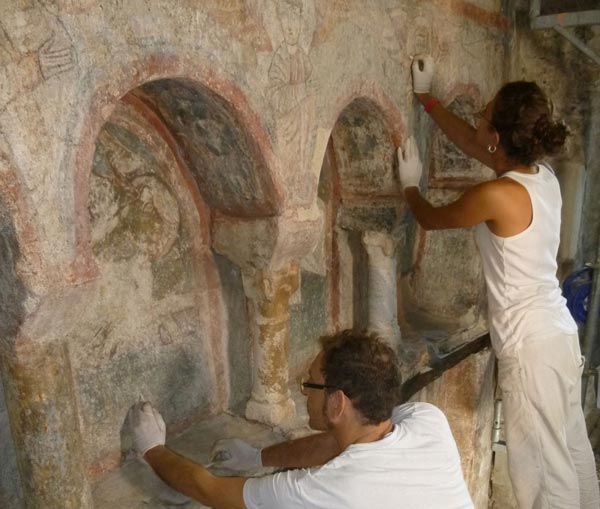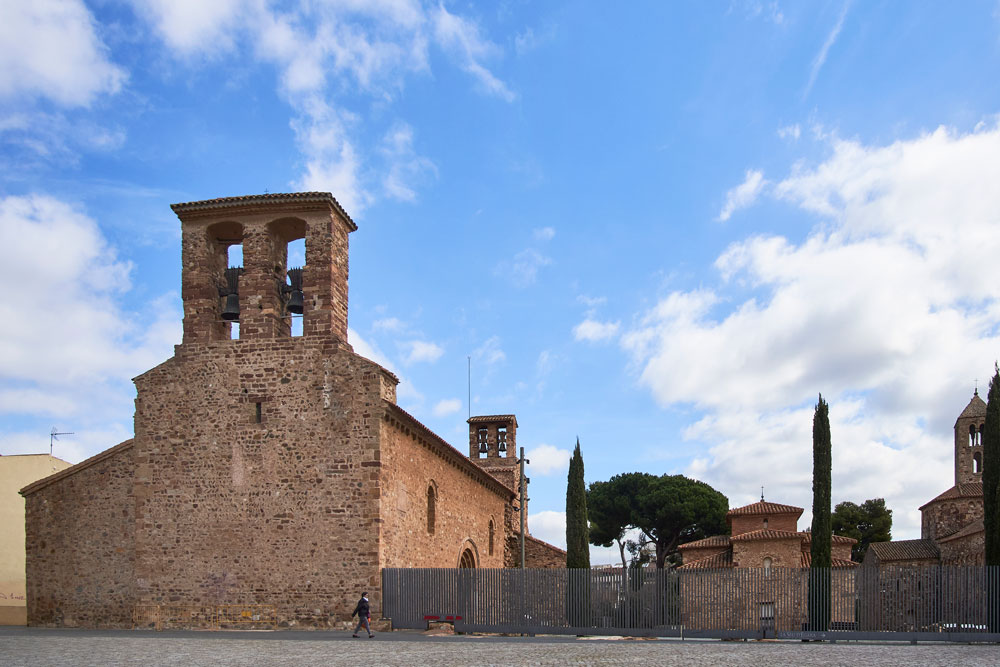

In 1995 initial excavations began in the new phase, directed by the archaeologists Antonio Moro and Antoni Rigo, and coordinated by Francesc Tuset. The next campaign, directed by the local archaeologist Antoni Moro, was conducted in 1996-1997, extending towards the building of St. Michael.


Between 1999 and 2003, excavation campaigns were undertaken almost continuously. This process has served to provide in-depth information as to the chronological evolution of the site from the first Iberian settlers to the present day.
Between 1994 and 2010, Terrassa City Council promoted its "Project for the cultural development and urban integration of the monumental complex of the Churches of St. Pere. Two sub-projects were conducted within the context of the Project itself: the "Special Plan for the monumental complex and its surroundings", and the "Director Plan for the monumental complex of the Churches of Sant Pere". Within the operational context of the Director Plan, various actions were taken to extend the scientific understanding of the grouping of three churches, and to publicise the site among the general public: adaptation and restoration of the complex, definition of liturgical and cultural uses, archaeological interventions and museum design.

A collaboration agreement was signed for the generation and implementation of the Director Plan, between the Autonomous Government of Catalonia, the Barcelona Provincial Authority, Terrassa City Council, the bishopric of Barcelona and the parish of Sant Pere.
The See of Egara today forms a part of one of the sections of Terrassa Museum, with a new museum presentation which has aroused the interest of researchers from a range of academic fields. The complex is a compendium of art, history and culture providing a view into the past from its very origins, in the Iberian and Roman era, through the successive Mediaeval, Romanesque, Gothic, Modern and Contemporary periods.